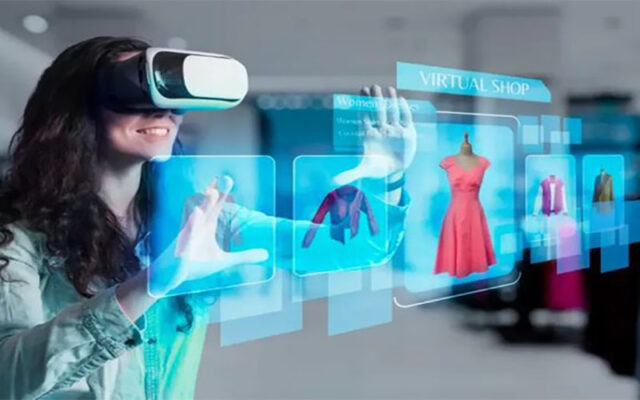
The e-commerce landscape is evolving faster than ever, and augmented reality is at the forefront of this transformation. In 2025, online shopping will no longer be about browsing static images or reading product descriptions. AR is bridging the gap between digital and physical retail, allowing customers to interact with products in a highly immersive and engaging way. The result? Higher conversion rates, fewer returns, and unparalleled customer satisfaction.
The Rise of AR in E-Commerce:
Augmented reality has gone beyond being a novelty — it’s now an important tool for brands looking to improve customer experience and boost sales. With advances in artificial intelligence, 5G connectivity, and AR technology, businesses can now offer hyper-realistic product previews that make online shopping feel more like an in-store experience.
Key Ways AR Is Revolutionizing Online Shopping:
Virtual Fashion and Beauty Try-Ons AR-powered virtual try-ons allow customers to see what clothes, accessories, and even makeup would look like on them — without stepping foot in the store. Brands like Sephora and Gucci are already using AR to track faces to help customers try on different shades of lipstick or glasses before making a purchase.
AR for Home Shopping and Furniture Giant retailers like IKEA and Wayfair have integrated AR-powered apps that allow users to visualize furniture and decor in their homes. By overlaying life-size 3D models, shoppers can make more informed purchasing decisions, reducing the hassle of returns.
Interactive 3D Product Previews Static images are becoming obsolete. With AR, customers can rotate, zoom in, and inspect products in 3D before purchasing. This feature is especially useful for gadgets, appliances, and high-end consumer products.
AR Showrooms Some brands are taking AR to the next level by creating fully immersive virtual showrooms. Instead of visiting a physical store, customers can walk through a 360-degree AR shopping experience, interacting with products as if they were right in front of them.
Business Benefits of AR in Online Shopping:
Increased Conversion Rates Customers are more likely to complete a purchase when they can see and interact with the product before they buy. Studies show that AR-powered product visualization leads to a 40% increase in conversion rates compared to traditional e-commerce.
Lower Return Rates High return rates are one of the biggest pain points for e-commerce businesses. AR helps eliminate uncertainty by giving customers a realistic preview, leading to more confident purchasing decisions.
Enhancing Customer Engagement AR experiences keep users on websites and mobile apps for up to three times longer, increasing brand engagement and boosting customer loyalty.
Competitive Advantage Brands that embrace AR are ahead of the curve, offering unique shopping experiences that set them apart from competitors who still rely on traditional methods.
What’s Next for AR in Online Shopping?
AI-Powered Personalized AR Experiences – Future AR systems will use AI to recommend products tailored to individual preferences, making shopping easier and more efficient.
Web-based AR (no app required) – Instead of downloading separate apps, customers will be able to experience AR directly from their web browsers.
Haptic feedback and AR shopping – The future may bring technology that allows users to “feel” textures and materials through AR-enhanced shopping.
Augmented reality is no longer just a futuristic concept, it is a game-changer that will redefine online shopping. In 2025, AR will enhance product discovery, personalize shopping experiences, and increase sales while reducing returns. Companies that invest in AR-enabled e-commerce solutions will not only improve customer satisfaction, but also secure a competitive advantage in an increasingly digital world.